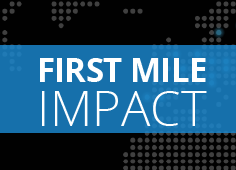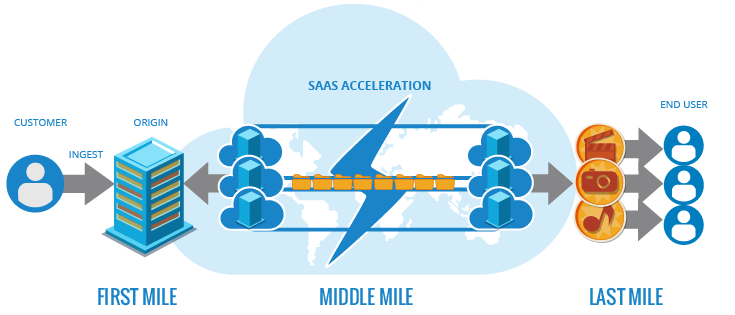
The First Mile Impact on Dynamic CDN Delivery Performance
Post Author:
CacheFly Team
Categories:
Date Posted:
July 15, 2015
When it comes to delivering content from the origin to edge servers, it’s common practice to focus on middle and last mile performance for optimizing CDN performance. Truth be told— the first mile is just as important and often overlooked.
Here’s why.
The reason CDNs are required for maximum performance is because TCP fails to effectively deliver maximum performance in non-LAN environments. When delivering static objects, objects are cached as close to the last mile as possible at each edge location. It’s critical for CDNs to get your content as close enough to your end-user—reducing latency and allowing TCP to operate efficiently.
However, dynamic delivery is very different from static delivery. If your pages are dynamic, content can’t just be cached at the edge; it needs to be served from the origin. Positioning the last-mile as close as possible to end-users is only *half* of the equation—the exact same TCP issues occur if there is latency between the origin server and the first mile, or ingress point into the CDN.
Although the proximity of a CDN to a customer’s origin is a critical component, the current market lacks emphasis on first mile performance. Other CDNs overlook the total response time from origin to end-user, and are not focused on topology from the origin to the ingest point. No other CDN focuses on the first mile or has truly set a first mile goal. In fact, many CDNs that offer dynamic acceleration aren’t even concerned to have their customers origin servers more than 40ms away from the CDN, while targeting that same latency goal globally for last mile latency! This approach totally fails to look at performance end-to-end, and leaves customers struggling to optimize their experience.

What’s different about CacheFly’s SaaS Acceleration?
Our goal is to be 2ms away from your origin—or closer. We do this by offering cross-connect access with our colocation partners, having on-net ingest servers in cloud providers such as Amazon, Rackspace and Digital Ocean, and by evaluating connectivity for new customers and deploying additional hardware as needed. Our reputation as the highest performing CDN for static content is something we take seriously, and informs our engineering decisions on a daily basis. We’ve taken the same approach in designing or end-to-end philosophy for SaaS Acceleration, ensuring you are not leaving performance on the table in either the first, middle or last mile.
It’s not easy to do this and there is a bit of cost complexity, but the performance result is worthwhile. We work with you to understand where your origin is. Even if we’re not located in a peering partner location close enough to your origin, we’ll work with you to offer a cross-connect in another facility. We care enough to provide you with the utmost fastest performance.
Be the FASTEST. Now.
Product Updates
Explore our latest updates and enhancements for an unmatched CDN experience.
Book a Demo
Discover the CacheFly difference in a brief discussion, getting answers quickly, while also reviewing customization needs and special service requests.
Free Developer Account
Unlock CacheFly’s unparalleled performance, security, and scalability by signing up for a free all-access developer account today.
CacheFly in the News
Learn About
Work at CacheFly
We’re positioned to scale and want to work with people who are excited about making the internet run faster and reach farther. Ready for your next big adventure?




